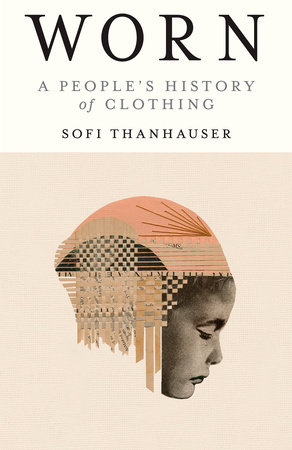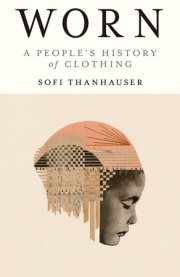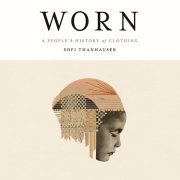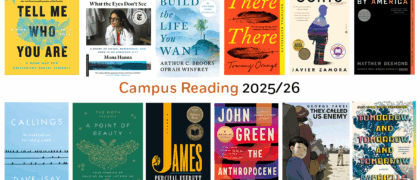1. The Last Linen Shirt in New Hampshire
In 2012, my mother and I drove up from Woods Hole, Massachusetts, through the gutted former textile hubs of Fall River and New Bedford, to visit a museum exhibit located inside the restored Sylvanus Brown House in Pawtucket, Rhode Island. The Sylvanus Brown House was a family dwelling from mid-eighteenth- century New England, arranged to give the visitor an idea of its inhabitants’ daily lives. We were there for the displays of textile tools used to make linen in colonial New England, before the arrival of the factory production.
Linen is a fabric made from flax, a plant with a slender stalk that grows to two or three feet tall and bears a light blue flower. Inside the hard husks of Linum usitatissimum, otherwise known as linseed or flax, are soft, silky strands. When these are twisted together, the brittleness of each strand alone is surmounted by group strength, and the resulting cord or thread can then become longer than any of the individual strands. These threads are woven together to make linen.
The thicker flax is sown in the ground, the finer the stalk, and subsequently, the thread. New Englanders planted their flax at the end of March or early in April. “Flax should be sowed promiscuously (as Wheat or Oats, &.c.) but somewhat thicker . . . it will take a Bushel and a Half to sow one Acre of Land to make it fit for Linen or Thread,” instructed John Wily, in A Treatise on the Propagation of Sheep, the Manufacture of Wool, and the Cultivation and Manufacture of Flax. The plants were pulled in July when the leaves turned yellow and left to dry. Then the dry plants were pulled through a rippling comb to strip the seeds, and retted—a process employing moisture to rot and soften the outer cellular tissue of the plant—in a stream or a dewy field. “It is out of the Power of any Man to tell the exact Number of Days it will take to water or dew rot Flax,” wrote Wily, leaving much to the farmer’s own discretion. After the flax had been retted it was crushed down the line of the stalk until all the coarse outer bark known as tow had been broken; then it was scutched—struck and scraped with a wood knife until the tow fell to the ground. The inner fibers of the flax were then drawn through a hackling comb to remove smaller pieces of tow, then carded, and spun, and woven into fabric.
Our tour guide at the Sylvanus Brown House was in period costume, with a long skirt, a shawl around her shoulders, and bonnet atop her head. She was a heavyset woman with a thick Rhode Island accent. She showed us the flax break, which looked like a large wooden paper cutter, and demonstrated with a sheaf of dried flax how to crush the bark, bringing down the wooden blade every inch or so. She showed us the iron spikes of the hackling comb and the carding brushes, which were lined with rows and rows of teasel, the spiky head of a flowering plant ideal for drawing multitudinous fibers into parallel rows.
Upstairs, our tour guide brought us to see the loom, which presided over an entire room. Finally she showed us the spinning wheel, and the groove in the wooden floor beside it that was made by the woman who was spinning as she walked back and forth, back and forth, a motion required by this particular kind of spinning wheel, dubbed the “walking wheel,” in order to draw the fiber away from the spindle and lengthen it before giving it a twist. The wheel would have been moved every so often in order to avoid wearing a groove too deep into the floor, the guide said. My mother and I looked at each other, making our eyes wide. She then announced to us, without ceremony or regret, in that frank manner that New Englanders have, that her shift was over.
I reflected on the bittersweetness in that phrase, “my shift is over.” On the one hand, textile making was the shift that was never over for the New England farm woman, as the grooves by the side of the walking wheel could so amply attest. On the other hand, the thread she had spun and woven—indeed all the materials to make her family’s clothing—came from a few acres around her own house. The American essayist, activist, and farmer Wendell Berry has said that “eating is an agricultural act.” So is getting dressed. Mrs. Brown would have known where her meal was grown and exactly where her clothing had been harvested. This was part of a long-standing tradition. The type of linen making that was being practiced on the New England farm before the Industrial Revolution was one that had persisted through thousands of years of human history. On this unlikely patch of New England soil, unbeknownst to anyone, it was living out its twilight years.
#
Humans developed an upright stance, and modern hands and feet, about four million years ago, oral speech between 150,000 and 100,000 years ago, and writing 3,500 years ago. The advent of string, according to Elizabeth Wayland Barber, professor emerita of linguistics and archeology at Occidental College, who specialized in using techniques from both archeology and linguistics to study ancient textiles, comes well after people had learned to speak, and before they learned to write.
The first clothes were most likely made of animal skins. Researchers using the DNA of lice have determined that humans most likely began clothing themselves in hides and pelts about 170,000 years ago. Then, at some critical moment in the long and leisurely waste of preliterate human time, people learned to weave plant fibers into textiles. Because cloth is rarely preserved at archeological sites, it is difficult to identify its earliest use with any level of certainty. In 2009, a Georgian, Israeli, and U.S. research team discovered more than one thou sand fibers of the flax plant in the Dzudzuana Cave in the foothills of the Caucasus Mountains in what is now the Republic of Georgia. The microscopic fibers were found in layers radiocarbon dated to as early as 36,000 years ago. A small number of fibers were colored black, turquoise, gray, and pink, and the research team concluded they had been dyed. This pulverized fiber powder is the earliest evidence we have of humans making use of linen.
Cloth is made from hundreds of strings interlaced with one another at right angles, or knit together in multitudinous knots. Before they could make cloth, humans had to learn to make thread. String making began during the Upper Paleolithic, a period during which humans migrated from Africa to every econiche on the globe. According to Barber, these two developments are connected: the advent of string made the rapid expansion of the zone of human habitation possible. With string, people could make nets, snares, tethers, leashes, fishing lines, and ways to bind objects together to make complex tools—new ways to catch prey and gather food.
Some of the earliest representations of humans wearing clothing made from vegetal fiber (rather than hides or sinew) show them wearing not cloth, but string. These so-called Venus statuettes made from bone and carved stone were discovered in what is now Russia and Eastern Europe, in a zone that represented the eastern end of what archeologists have termed the Gravettian culture. Most of these statuettes show naked women but some—the earliest of which dates to 20,000 BC—depict women wearing skirts made of twisted cords, distinguishable from strands of sinew because the artist carefully carved the fraying ends of each of the strings. These skirts were more ceremonial than practical, used to signify and enhance fertility, and to protect women during childbearing. One such statuette, the Venus of Gagarino, wears a string skirt that hangs only in front, above the pubic bone and below the breasts, covering neither.
Representations of women in string skirts exist in this geographical area for the next twenty thousand years, and beginning around 1300 BC actual string skirts are preserved or partially preserved in the archeological record. The first physical evidence of cordage made of vegetal fiber dates much earlier, to 15,000 BC, and comes from the Lascaux caves in southern France, where an abbot working on copying cave paintings “picked up a compact lump of clay” and broke it open to find, inside, “the carbonaceous imprint of a sort of fillet with twisted lines stretching the entire length of the lump.” All the earliest string in the archeological record is from plant fiber such as flax, hemp, jute, ramie, yucca, elm, linden, willow.
The first intact cloth in the archeological record, like those microscopic remnants from the Georgian cave, is also of linen. In 1988 archeologists digging in Çayönü, Turkey, found a linen fragment wrapped around the handle of a tool made from antler that had miraculously been preserved because of contact with calcium in the bone. The cloth was radiocarbon dated to 7000 BC. Analysis of seed types at the archeological site demonstrated that, unlike the wild flax that was used to make the linen found in the Georgian cave, this flax was domesticated. The world’s first farmers, planters of wheat and barley at the headwaters of the Tigris, had also domesticated flax, and farmed the materials for their clothing, as they had for their food.
Barber has argued that textile production up until the Bronze Age, which began in the Near East around 3000 BC, was in almost all human societies women’s work, in large part because it is an activity that is compatible with childrearing and safe for children to be around, unlike hunting. Toward the end of the Bronze Age, roughly 1200 BC, men begin to weave, not for household use, but for profit (or in some cases, if they were enslaved, for a slave owner’s profit) in a period of increasing trade and specialization. In Egypt, men began weaving decorative, patterned cloth at around 1500 BC. For this, they used upright, vertical looms, today called tapestry looms, which provide a suitable orientation for producing expensive fabrics with designs in them. By that time, women in the region had been weaving plain linens on horizontal looms for three thousand years.
Perhaps because of this deep-rooted association with women, textiles have often been treated as less important archeological artifacts than other kinds of ancient objects. Textiles also break down quickly. Where they have survived, physically, their second-class status has threatened them with a more avoidable kind of historical annihilation. This was almost the fate of the oldest shirt in the archeological record. The shirt was found in a First Dynasty Egyptian tomb at Tarkhan, and dates to 3000 BC. Excavating the tomb in 1912 and 1913, the British archeologist Sir William Matthew Flinders Petrie dug it up among numerous other linens and placed it among his findings. The shirt went on to languish at University College London in a storage container marked “funerary rags” until two female curators exhumed it in 1977 and discovered what it was: a meticulously crafted shirt with an elaborate system of pleats that allowed its wearer to move their limbs comfortably, while still enjoying a fitted silhouette.
#
Copyright © 2022 by Sofi Thanhauser. All rights reserved. No part of this excerpt may be reproduced or reprinted without permission in writing from the publisher.










